#organic gardening
Text

34 notes
·
View notes
Text
Making Desert Land Fertile with Water Bunds

#permaculture#regenerative ag#regenerative agriculture#agriculture#farming#gardening#how to make soil more fertile#how to turn a desert into fertile land#soil#soil fertility#organic farming#organic gardening#water harvesting
2K notes
·
View notes
Text
Ok, new garden idea!
I remain desperate to remove the ugly low non-native pine hedge at the alley side of the yard. I never see any wildlife around it and it does nothing to obscure the view of garages and trash bins.
Eventually the apple and plum trees will obscure the upper part of the view, so I wanted something to obscure the lower part of the view.
My latest concept: the thorn beds!
The ground along that side is thick with big woody roots, so cutting them down and plopping a raised bed on top makes sense. the roots will break down eventually and make nice rich soil, but it's hella hard to plant into.
And, Ty misses our old garden's raspberry bed. I keep raspberries in beds because, as anyone whose grown them knows, they like to escape and run rampant.
But from an aesthetic viewpoint they're just sort of....a big green blob of a plant.
But how cute would it be to do a mixed bed of raspberries and raspberry colored roses? These plants like similar conditions and the roses are good at not being strangled by the berries.
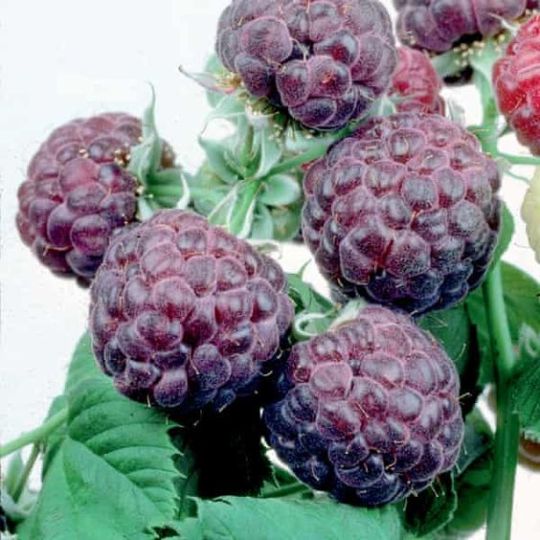
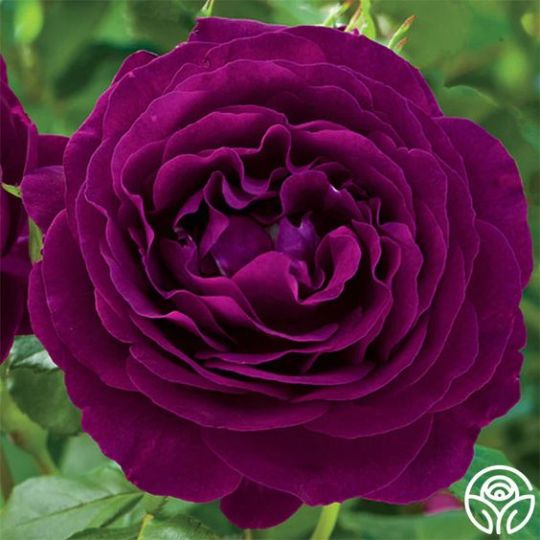

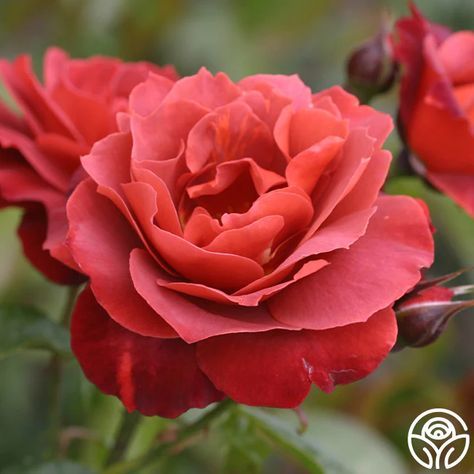
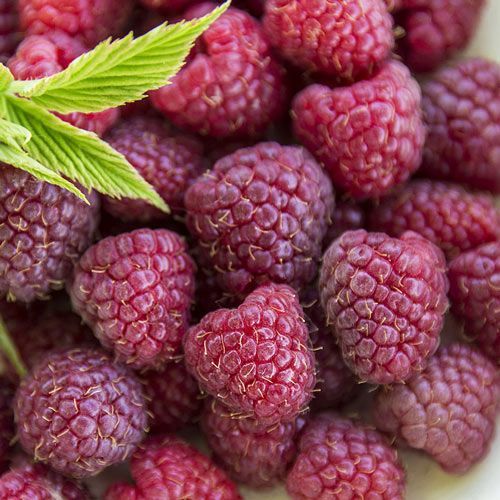


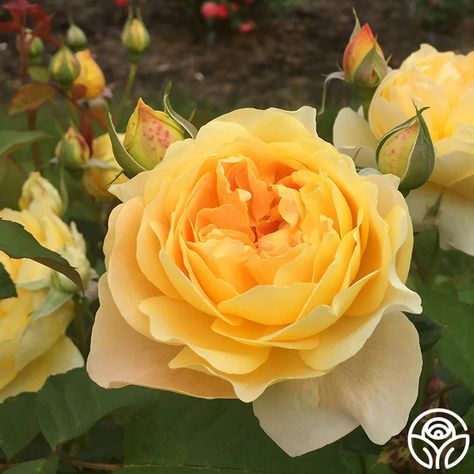
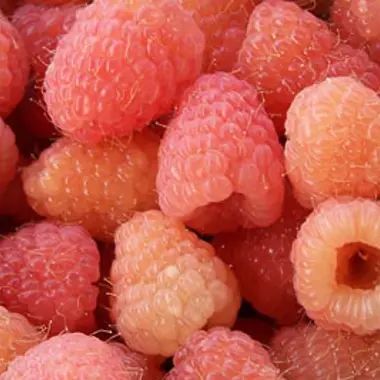



So yeah. Kind of obsessed with this idea.
#organic gardening#urban gardening#gardening#gardenblr#edible gardening#roses#raspberries#rhombus house garden
173 notes
·
View notes
Text

𝐁𝐢𝐨 ~ 𝐀𝐥𝐢𝐜𝐞 𝐁𝐚𝐫𝐛𝐞𝐫 𝐒𝐭𝐞𝐩𝐡𝐞𝐧𝐬 {𝑎𝑚𝑒𝑟𝑖𝑐𝑎𝑛 1858~1932}
82 notes
·
View notes
Text

Starting seeds indoors is a crucial step for any aspiring gardener looking to get a head start on the growing season. While it may seem like an extra effort, the benefits far outweigh the initial investment of time and resources. This comprehensive guide aims to walk you through the entire process of starting seeds indoors, from understanding the importance to reaping the rewards of a successful indoor seed-starting venture. By the end of this guide, you'll be equipped with the knowledge and confidence to successfully start your seeds indoors, setting the stage for a bountiful and thriving garden. Let's embark on this green journey together!
How to Start Seeds Indoors
#lovegardening#gyo#gardening tips#gardening uk#gardening#gardenchat#organic gardening#vegetable gardening#backyard#garden#seedstarting#indoorgardening#gardeningtips#gardeningtipsforbeginners#gardener#gardenersworld#gardenersofinstagram#organicgardening#organicgardener#home and garden#my garden#gardenblr#gardencore#gardeners on tumblr#vegetable garden#plants
60 notes
·
View notes
Text


Central Rocky Mountain Permaculture Institute
10/15/23
Basalt, CO
#permaculture#crmpi#central rocky mountain permaculture institute#horticulture#organic gardening#colorado#cottagecore#grow food not lawns#grow food#biodiversity#save our earth#naturecore#my photos#rocky mountains#greenhouse
95 notes
·
View notes
Text
I'm becoming convinced that mycorrhizae are super important & that everyone should know more about them, so here:







#this is also why no-till works#and mulching with wood chips or other carbon-rich mulches is so great#gardening#organic gardening#permaculture#no dig#no till#feed your fungus!#solarpunk gardening#solarpunk
2K notes
·
View notes
Text

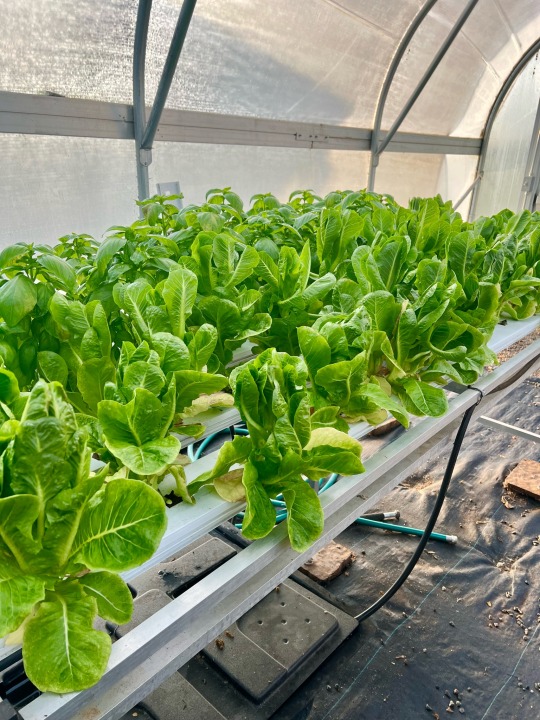
9/19/23 ~ Hydroponics at school. Those cucumbers grew super fast 😳 and some Romaine Lettuce!
#indoor garden#container gardening#sustainable gardening#vegetable gardening#starting seeds#grow organic#grow your own food#organic gardening#tomato garden#green witch#greenhouse#greenhouse nursery#plant nursery#hydroponics#growing cucumbers#romaine lettuce#sustainable agriculture
56 notes
·
View notes
Text
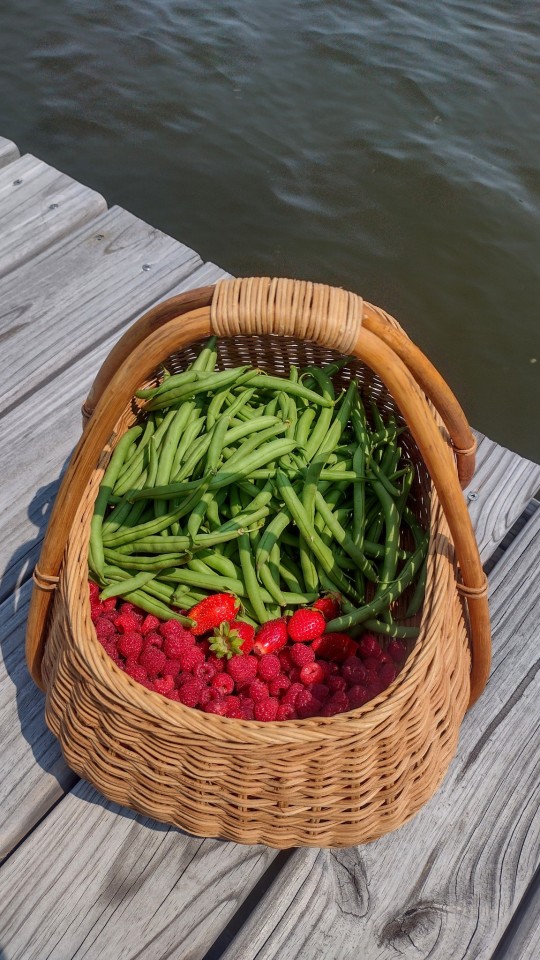
Harvest from the garden today 💕✨🤤
#freydis.txt#pics#cottagecore#cozycore#cottageblr#grandmacore#organic cooking#organic lifestyle#organic gardening#organic food#organic#vegetable#fruit#strawberry#raspberries#green beans#hi everyone i am resurrected from the dead
70 notes
·
View notes
Text
Garden transformation: about 50% done!
I've mulched as much as I can with the woodchips I got from the power company, and all my garden beds are set up, irrigation lines have been fed, and we set up a little rose trellis in the middle!
Compost has arrived and is will be the next big hurdle, moving 20 yards of dirt with a shovel and a cart. Very very excited about what's to come, and hopefully there will be no more frosts. Can't wait to get planting!
Hard to believe this was all bahiagrass lawn a year ago.
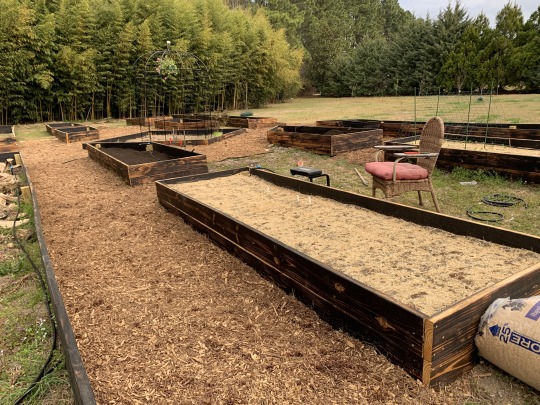
15 notes
·
View notes
Text

Campanula
#cottagecore#traditional catholic#cottage vibes#christian blog#mine#biblical womanhood#grandmacore#cozy aesthetic#naturecore#traditional femininity#warm aesthetic#meadowcore#warm academia#cottage garden#feminine#my garden#organic gardening#flower garden#floral aesthetic#original photography#my photography#nature photography#gardener#gardening#cottage charm#nature aesthetic#garden aesthetic#rural aesthetic
167 notes
·
View notes
Text
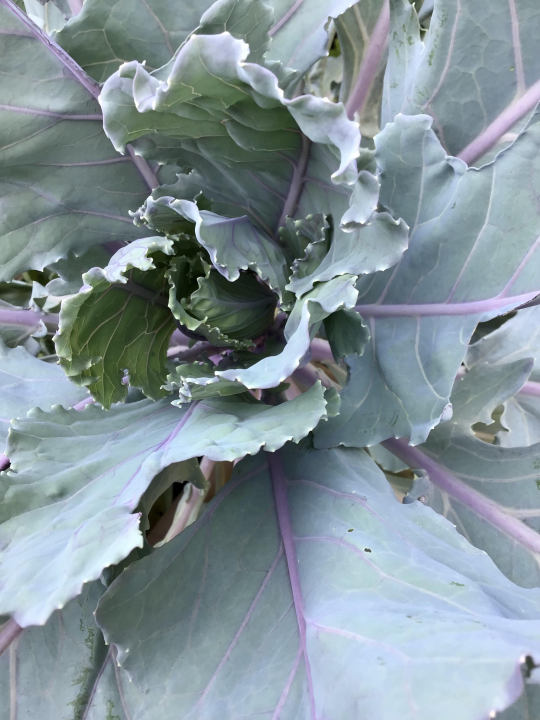

Collard greens are one of my favorite vegetables to grow in the garden. Lovely leaves, right? And so tasty when cooked!
#Mine#Plants#Permaculture#collard greens#organic gardening#pnw gardening#lovely leaves#grow your own food#healthy food
44 notes
·
View notes
Text
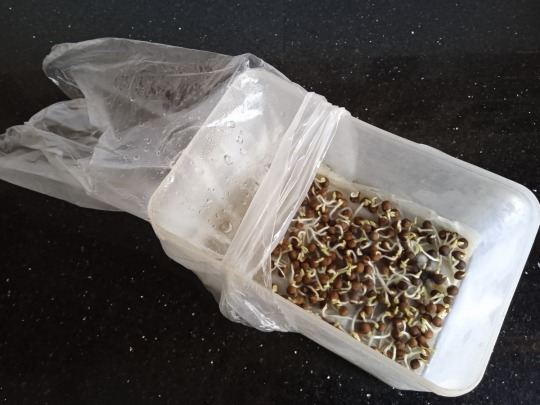
Give your sweet pea seeds a head start by germinating them indoors late January through March to transplant into the garden as soon as soil can be worked.
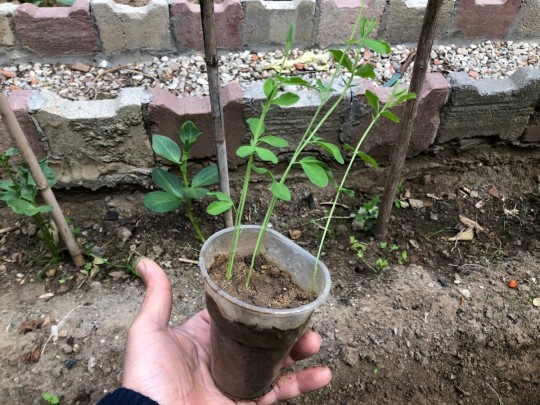
By doing this, you will be sure that the seeds won’t rot before they sprout under the soil, resulting in a successful plant with beautiful flowers. It also guarantees that you won’t be wasting your time planting some seeds that might not even sprout at all!

Want to read more: How to Grow Sweet Pea
#gyo#gardening uk#lovegardening#gardenchat#gardening#garden#gardening tips#organic gardening#vegetable gardening#backyard#gardeningtips#growingflowers#flowerstagram#flowers#flowerlovers#growyourownflowers#growyourown#sweet pea#home and garden#botanical garden#flower garden#gardenblr#gardencore#gardeners on tumblr#my garden#gardens#potted garden#urban gardening#vegetable garden#plant
36 notes
·
View notes
Text
Spent multiple hours today raking several years worth of larch needles and piling them into the blueberry bed for water retention, soil enrichment, and acidification. Got a good 10 inches deep of fluffy mulching.
I'll be doing even more a bit later in the year, to mulch all the grape vines for free, but this was more urgent so we could get these flammables up off the ground before hosting a bonfire for the neighborhood kindergardeners.
I am going to be SO SORE tomorrow, so I sure hope these blueberries appreciate it.
#urban gardening#organic gardening#gardenblr#edible gardening#cottage gardening#gardeners of tumblr#Rhombus house garden#rhombus garden
29 notes
·
View notes
Text
If you're new to gardening, then you'll hear a lot about hardiness zones, but there's more to it than that.
Hardiness zone *only* tells you about how cold you can expect your coldest temperatures in winter to be, but people try to use it for a lot more than that. Here's one example for the US:

Another thing that's important to know if you want to grow perennials, particularly things like gooseberries and apples, is how many chill hours (iirc, hours between 45f and freezing) you get, which is shown in this next map:

I'm guessing North Dakota is in that little bubble because they spend so much of winter below freezing, which doesn't count toward chill hours.
A third consideration, which comes in handy when someone who's used to Texas thinks you should be able to grow papayas near Seattle because it's also zone 8 for hardiness, is the heat zone you're in. Heat zone measures how many days above 85f a location got, historically. Either last year was a huge anomaly (let's hope) or this desperately needs to be updated:

When you combine these three, it gives you a better idea of what you can grow, and what will thrive in your area.
By the way, here's a Chill hours chart from One Green World nursery:
Fruit Tree Chill Hours Chart
Almond: 400-600
Walnut: 800-100
Filbert (Hazelnut): 800-1300
Chestnut: 300-500
Pistachio: 550-800
————————————–
Apple: 700-1000 (Low chill varieties between 200-500)
Apricot: 500-800
Peach: 600-1000 (low chill varieties between 300-500)
Nectarine: 100-500
Asian Pear: 400-500
European Pear: 600-800
Japanese Plum: 500-900
European Plum: 700-1000
Pluot: 400-800 (Low chill varieties between 200-300)
Mulberry: 200-400
Quince: 200-500
Medlar: 200-400
Pawpaw: minimum 400
Fig: 100-200
Olive: 200-300
Persimmon: 100-200
———————————-
Raspberry: minimum 800
Blackberry: 200-800
Grape: 150+
Gooseberry: 800-1000
Currant: 800-100
Strawberry: 200-300
Blueberry:
Southern Highbush 200-300
Northern Highbush 800+
Honeyberry: 750-1000
Pomegranate: 100-300
Goumi: 100-450
Pineapple Guava: 50-100
Citrus: 0
#gardenblr#gardening#gardening beginners#gardening info#hardiness zone#chill hours#heat zone#solarpunk gardening#organic gardening#permaculture
897 notes
·
View notes
